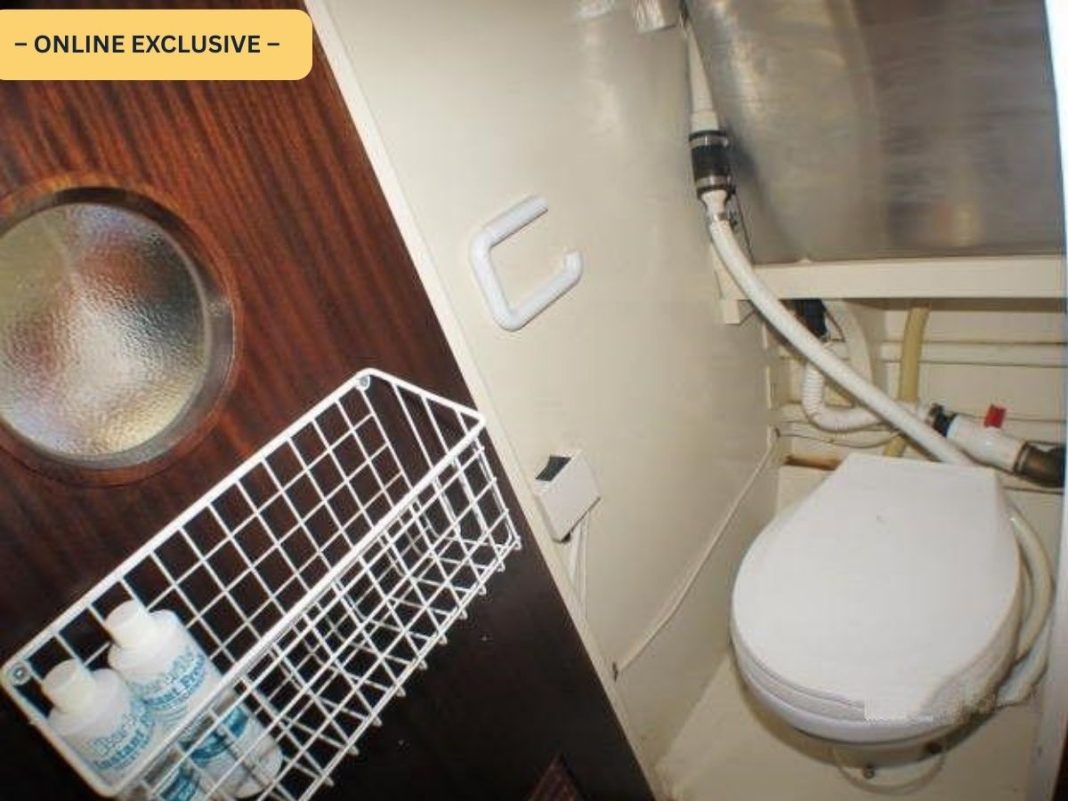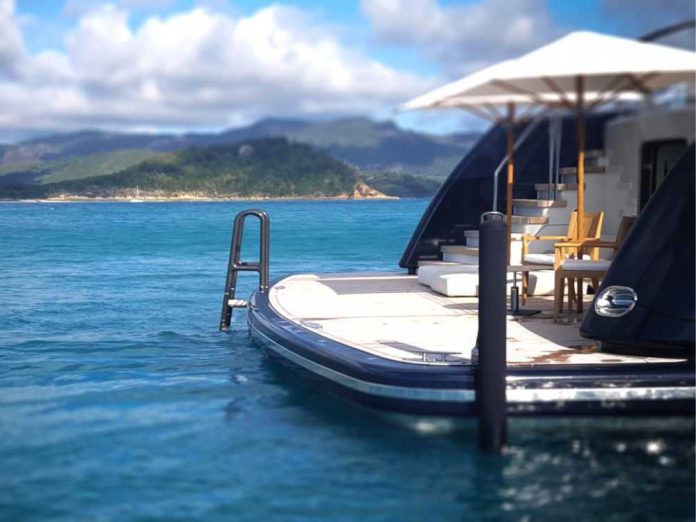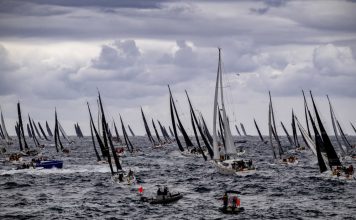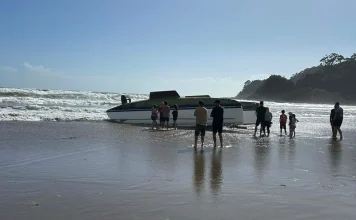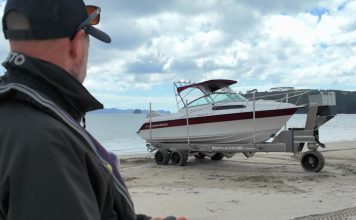Why marine toilet maintenance matters
Every boatie knows that a toilet failure can ruin an otherwise perfect day on the water. A blocked or smelly head is more than an inconvenience: it makes the cabin unbearable, can damage fittings, and in the worst cases risks water ingress. A little attention now prevents costly, messy fixes later.
For liveaboards, it’s even more pressing. Keeping a marine toilet fresh is the bane of my liveaboard life. Even with the best installation and routine servicing, daily use finds weak spots. The key is not to do one big overhaul and then forget about it — it’s about steady, seasonal, if not daily, care.
Choosing the right equipment
The toilet itself is only half the story. Most persistent odour problems don’t come from the porcelain at all — they come from the hoses. Standard PVC hose is permeable, which means odorous gases pass straight through and leave the entire compartment smelling bad. Premium odour-resistant sanitation hose, such as the types recommended by marine engineers, is thicker, reinforced, and treated to resist permeation. It costs more upfront but saves years of frustration.
Connections are just as important. Every join should be double-clipped with stainless steel clamps, mounted opposite each other. This reduces the risk of failure if one clamp loosens or corrodes. Given that any failed underwater connection could flood a boat, those little extra clips are cheap insurance. Full-flow seacocks and fittings are also worth the investment. Narrow-bore valves create choke points where solids can collect, leading to repeated blockages. Choosing fittings that allow waste to move freely through the system makes everything downstream more reliable.
Burnsco stocks a full range of TruDesign fittings, rectangular holding tanks, and bulkhead tanks that pair with their toilet range. They’re designed for New Zealand conditions and will meet regulatory requirements when installed correctly.
Keeping the bowl fresh
Daily cleanliness matters. For quick, chemical-free cleaning, baking soda and vinegar are a simple liveaboard favourite. Sprinkle baking soda in the bowl, pour in vinegar, and the fizzing reaction loosens grime and neutralises odours. For stubborn stains, soak a paper towel in vinegar, press it against the stain for half an hour, then scrub with baking soda before flushing. This method avoids harsh cleaners that can damage seals and keeps the bowl looking and smelling fresh.
(I recommend using a toilet brush and holder that mounts securely to the wall. Another option I’ve seen is keeping the brush in a hanging bag fixed to the wall. Both methods prevent the brush, and whatever it carries, from spilling across the bathroom floor and walls when the boat hits inevitable bumps.)
For ongoing odour control, bio-enzyme treatments and waste additives work wonders. Products like Zaal Noflex Digestor, and Bio-Pak sachets break down waste naturally while reducing scale buildup in hoses and tanks. Pair these with marine-grade paper such as Thetford Aqua Soft or Camp Soft Toilet Paper — standard household rolls don’t dissolve fast enough and are a common cause of clogs. (Alternatively, don’t flush the used toilet paper down the toilet, place it in a rubbish bag for disposal on land later on. To set up a bag for soiled toilet paper on a boat, you will need a separate trash bag or nappy sack, placed inside a small covered pail or bucket next to the toilet. Discard used toilet paper into this bag.)
You can also use odour absorbers, which help reduce smells and keep the head fresher.
Basic servicing
A basic service takes just 20 minutes and should be part of your seasonal prep. With nitrile gloves, a screwdriver, and warm soapy water, strip and clean the pump assembly. Replace worn seals and joker valves to keep everything working smoothly. Burnsco carries Jabsco Manual Toilet Service Kits, TMC Manual Toilet Spares, and individual joker valves and gaskets, so you don’t need to replace the entire unit when only a small part has failed.
Keep spares onboard as this will mean you can fix problems without cutting a trip short.
Full service and replacement
Every five to ten years, or sooner if you see cracks or wear on the pump cylinder, it’s time for a full service. Many skippers find it easier to replace the entire pump assembly rather than dismantle and rebuild. Products like the TMC Replacement Toilet Pump or Jabsco Replacement Pump make this straightforward. If the toilet seat or lid looks tired, a Johnson soft-close seat is an easy upgrade that makes a surprising difference to comfort.
At this stage, it also pays to replace your hoses. Even the best odour-resistant hose eventually loses its effectiveness, and renewing it ensures years of fresh use ahead.
Electric or manual — or both?
Electric toilets are quick and convenient, especially for families or guests unfamiliar with manual pumps. Models like the TMC Luxury Electric Toilet, or the TMC Standard Electric Toilet, or the Johnson AquaT Silent Comfort Electric Toilet flush quietly and cleanly at the push of a button. Manual toilets, on the other hand, are simple, robust, and don’t rely on electrics. Many seasoned skippers swear by carrying both — if you’ve got space for two heads, one electric and one manual is the best combination. That way, if one fails, you’re not left without facilities.
If you’ve only got room for one, carry a backup. Burnsco’s 20L Portable Toilet, a Thetford Porta Potti, or even a simple toilet bucket will save the day if your main system fails mid-cruise.
Holding tanks and waste rules in New Zealand
In New Zealand, untreated sewage cannot be discharged into lakes or rivers, and at sea it must be released at least 1000-metres offshore in most regions. The simplest solution is a holding tank. Burnsco offers 35L and 60L rectangular tanks, bulkhead-mounted options, and monitoring systems like the Aqualarm Holding Tank Sensor or TruDesign Tank Monitor Alarm. Adding a TruDesign vent filter to your setup reduces smells when docked.
Pump-outs are available at most marinas. They’re simple to use but take patience: attach the hose securely, start the suction, and allow the tank to empty slowly. Keep absorbent pads on hand for drips and dispose of them responsibly.
Living with it day to day
For liveaboards, toilet care is constant. Keeping a marine toilet fresh really is the bane of my life. It’s not enough to service once a year — the trick is steady upkeep. My own routine is simple: a baking soda and vinegar clean multiple times a day, an enzyme treatment once a week (or less), and a full fresh water flush whenever the boat’s left idle (or as you’re cleaning out your holding tanks.) It might feel relentless, but it’s the only way to keep the smallest room from becoming the smelliest.
Burnsco makes this easier by stocking everything from full electric toilets and compact manuals through to holding tanks, pumps, hoses, spares, and additives. Whether you’re doing a quick seasonal service, a major install, or just want a backup portable loo, it’s all under one roof. Better yet, their staff know the quirks of Kiwi boating and can point you to the right product for your vessel.









